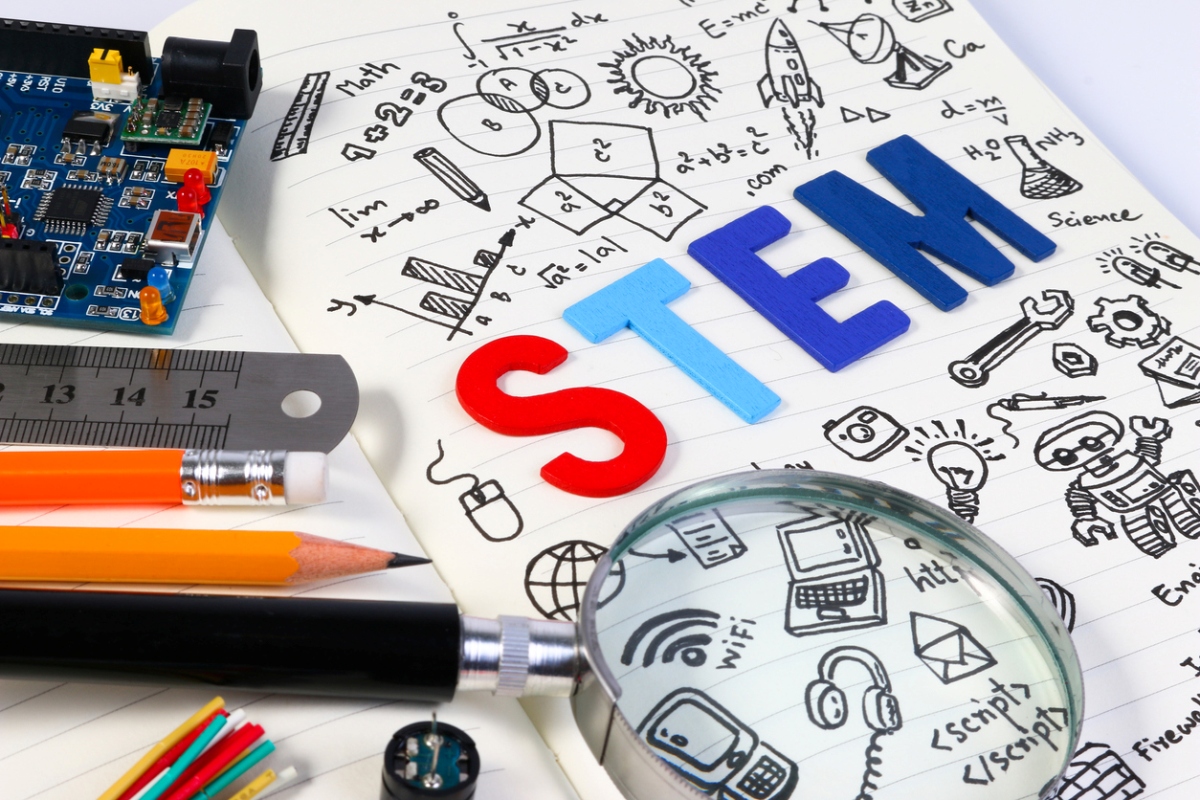Mamata Banerjee composes song on World Music Day
World Music Day was observed in the city with great enthusiasm.
By introducing them to STEM at an early age (2 – 10 years), you are building the foundation for a bright future. Research also shows that students who have a good early education are 23% more likely to choose a career path that they truly enjoy and care about.

(Photo: Getty Images)
STEM is an educational curriculum that is gaining momentum rapidly in India. Rather than considering Science, Technology, Engineering, and Mathematics as four standalone academic disciplines, STEM integrates them into a comprehensive and cohesive learning paradigm. STEM curriculums focuses on introducing interdisciplinary and application-based learning with real-world examples and get students interested in Applied Mathematics and Sciences from an early age.
Let’s break down STEM
Advertisement
Science in STEM
Advertisement
Traditionally, science experiments are limited to schools and laboratories. However, STEM-focused science lessons incorporate the application of scientific learning into everyday activities like cooking, gardening, etc. A STEM science activity at home can be as simple as observing an oscillating tomato tied to a string.
Technology in STEM
Technology in STEM curriculums isn’t limited to sessions in computer labs drawing on Microsoft Paint. These days, kids use electronic toys powered by advanced technologies like AR and VR, mobiles, tablets daily
Technology supports accessibility, which provides a way for students to engage with content and empowers them to give their point of view.
Engineering in STEM
STEM curriculums incorporate the engineering design process — identifying problems, evaluating options, and optimizing solutions. STEM-based engineering education also includes hands-on activities that attempt to solve real-life problems.
Math in STEM
Math classes in STEM curriculums encourage students to use concepts like algebra to find the shortest distance between an ice cream store and their homes, paying for a candy and counting the rest of the money, sharing a box of cookies equally amongst the class, and other such activities that highlight the practical importance of concepts taught in the classrooms.
What is the right age to introduce STEM to kids?
While the answer to this question is subjective, we strongly believe that you can introduce STEM to kids as early as their second birthday.
We all have a natural inclination to explore, build, and question. Ms Jen Buchter an expert in early childhood education, explains the importance of neurological processes in early childhood when kids are naturally curious of how the world works and is an ‘optimal time to introduce children to scientific inquiry.’
By introducing them to STEM at an early age (2 – 10 years), you are building the foundation for a bright future. Research also shows that students who have a good early education are 23% more likely to choose a career path that they truly enjoy and care about.
How can you build STEM skills in kids?
Depending on the interests and age of the kids, you can pick the best activities that your kids would enjoy. The best practice for early education
is to allow students to be actively engaged, and take the initiative in their learning.
The best part about STEM education is that you can do it yourself outside classrooms. You can start by letting kids take part in daily activities like cooking and baking, playing musical instruments, shopping, gardening, etc. Kids get a chance to get a first-hand experience of how things are done in the real world.
Your next day trip with your kid should be to the museum. Talk about different topics, ask them questions and let them make hypotheses. Explore the celestial objects and discussing space-fantasies can trigger your young one’s imagination.
Being around other kids, learning and competing with them reassure kids that STEM careers don’t turn them into “lone scientists.”
The Changing Face of STEM in India:
India has always been producing graduates in huge numbers. In 2016, over 2.6 million Indians graduated in courses related to STEM second to China (4.7 million). But the real question is of skilled workforce. The shortage of skilled talent doubled from 6% in 2016 to 12% in 2018.
These alarming numbers have caught the attention of government, not-for-profit organizations, and corporations as well.
Government initiatives like Atal Innovation Mission and not-for-profit organizations like India STEM foundation are fostering STEM curriculums at different levels of education. Corporations like DLF Foundation, Ford and Maruti Suzuki have been contributing to STEM education in India by adopting schools under Robo Siksha Kendra program.
Also, Indian edtect startups are revolutionizing learning by merging physical and digital worlds. To take an example, Augmented Reality based experiences have gamified learning to make STEM hands-on with interactive puzzles and DIYs. Such toys and games focus on imbibing essential STEM skills such as problem-solving, critical thinking, math, science, design ability, etc. at early ages.
India, collectively, is making efforts to address the demands of tech-dependent tomorrow by making amends at the grass-root level, i.e. the approach to teaching/learning. As parents, brothers, sisters, and professionals, we all share the responsibility to help shape the future.
As little as talking about STEM with a co-worker or a neighbour can cause a progressive ripple.
The author is the co-founder and CEO of PlayShifu.
Advertisement